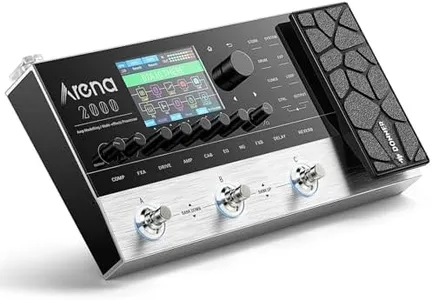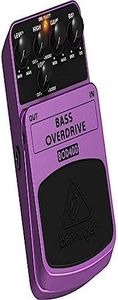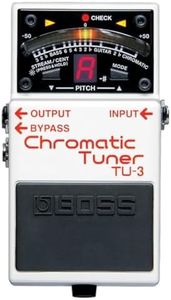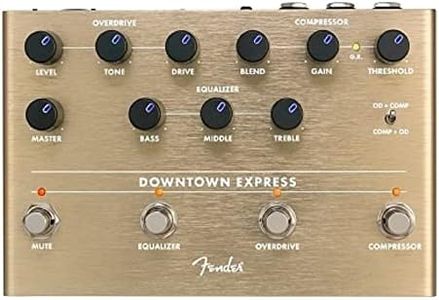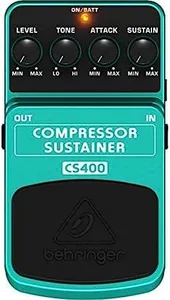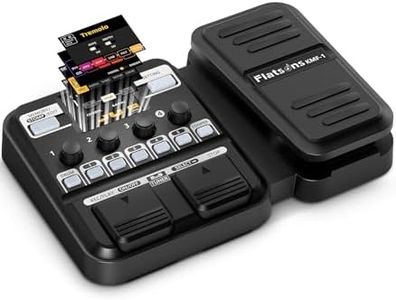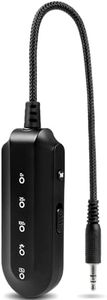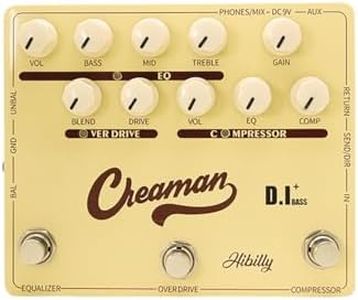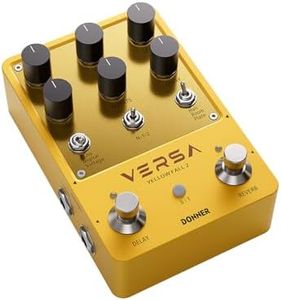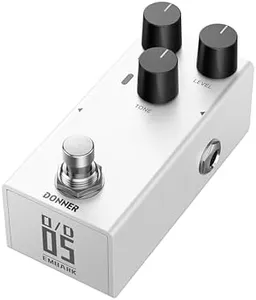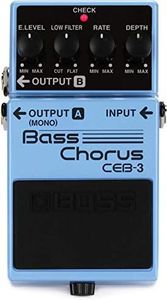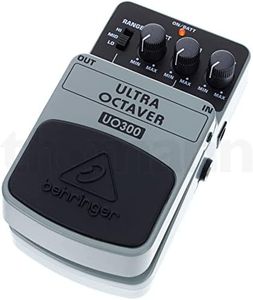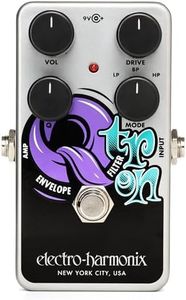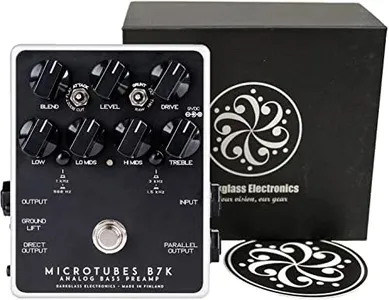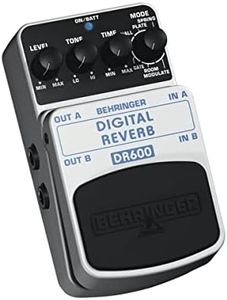10 Best Bass Guitar Pedals 2025 in the United States
Our technology thoroughly searches through the online shopping world, reviewing hundreds of sites. We then process and analyze this information, updating in real-time to bring you the latest top-rated products. This way, you always get the best and most current options available.

Our Top Picks
Winner
Behringer BASS OVERDRIVE BOD400 Authentic Tube-Sound Overdrive Effects Pedal
Most important from
5559 reviews
The Behringer BASS OVERDRIVE BOD400 is designed to deliver tube-like distortion and a smooth, fat tone. It includes a Balance control for blending overdriven and dry bass sounds, which adds flexibility to your sound shaping. With dedicated Level, 2-band EQ, and Gain controls, this pedal allows for extensive customization of your bass tone, making it suitable for various musical styles. The status LED is a useful feature for indicating when the effect is on or checking the battery status.
Weighing only 0.73 pounds and measuring 2.76 x 2.13 x 4.84 inches, the pedal is compact and portable, which is ideal for gigging musicians who need to travel light. However, the requirement of a 9V battery may not be as convenient as a power adapter for some users. The analog signal format ensures a warm, natural sound, which is a plus for purists.
In terms of build quality, the pedal's plastic construction might not be as durable as some higher-end, metal-cased alternatives, though it aims to compete with leading products in the market at a more affordable price point. Given its features, it appears to be a reliable choice for bassists looking for an affordable yet effective overdrive pedal. However, for those seeking the utmost in durability and power options, considering higher-end models might be worthwhile.
Most important from
5559 reviews
Boss TU-3 Chromatic Tuner Pedal with Bypass
Most important from
2234 reviews
The Boss TU-3 Chromatic Tuner Pedal with Bypass is a reliable choice for bass guitarists looking for a tuner pedal. One of its standout features is the high-brightness mode, which ensures the LED display is easily visible even in outdoor settings. This is particularly useful for musicians who perform in various lighting conditions.
The 21-segment LED meter provides precise tuning, while the drop tuning and guitar/bass mode make it versatile for different tuning needs. True bypass functionality is a plus, as it means the pedal won't interfere with your signal when not in use. The pedal is powered by a standard power supply, which is convenient for most users. In terms of controls and adjustability, the TU-3 is straightforward and user-friendly, making it easy to achieve accurate tuning quickly.
It is also built to last, with a robust design that can withstand the rigors of regular use. However, at 390 grams, it is on the heavier side for a tuner pedal, which may be a consideration for those who prioritize portability. Its dimensions (10”L x 4”W x 10”H) also mean it will take up a bit more space on your pedalboard compared to some more compact options. In summary, the Boss TU-3 is a solid choice for bass guitarists who need a dependable and easy-to-read tuner pedal, though it may be a bit bulky for those with limited pedalboard space.
Most important from
2234 reviews
Tone Hammer Preamp Direct Box Pedal V2
Most important from
8 reviews
The Aguilar Tone Hammer Preamp Direct Box Pedal V2 is a versatile addition to any bass guitarist's setup, functioning not only as a preamp but also as a DI box and distortion pedal. This multi-functionality makes it a great choice for musicians looking to simplify their pedalboard without sacrificing sound quality. One of its key strengths is the extensive tone-shaping capabilities, allowing players to adjust bass, treble, gain, and blend easily. This means you can really dial in your desired sound, whether you want a clean tone or a bit of grit.
Durability is another strong point, with the pedal housed in a sturdy aluminum chassis that can withstand the rigors of both stage and studio use. Plus, the inclusion of a footswitch for toggling between clean and distorted tones makes it user-friendly during live performances. When it comes to connectivity, the Tone Hammer offers a 1/4" input and output, along with an XLR output for direct recording, which adds flexibility for various setups.
However, it’s important to consider a few drawbacks. While the pedal is lightweight and portable, some users might find its size a bit larger than typical compact pedals, which could be a concern for those with limited pedalboard space. Additionally, while the controls are extensive, it may take time for beginners to fully understand how to utilize them effectively, especially if they are new to tone shaping.
Most important from
8 reviews
Buying Guide for the Best Bass Guitar Pedals
Choosing the right bass guitar pedal can significantly enhance your playing experience and allow you to explore a wide range of sounds and effects. When selecting a pedal, it's important to consider your musical style, the type of sound you want to achieve, and how the pedal will integrate with your existing gear. Understanding the key specifications and features of bass guitar pedals will help you make an informed decision and find the best fit for your needs.FAQ
Most Popular Categories Right Now
